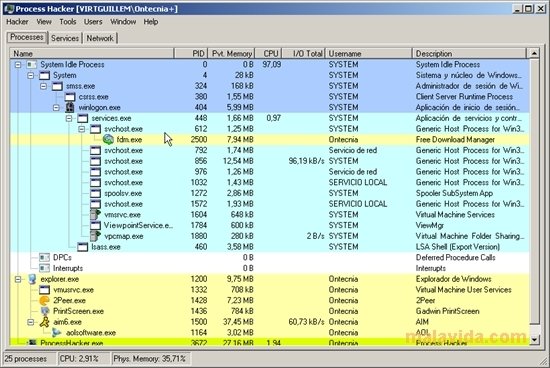
- PROCESS MONITOR WINDOWS 8 HOW TO
- PROCESS MONITOR WINDOWS 8 UPDATE
- PROCESS MONITOR WINDOWS 8 ARCHIVE
- PROCESS MONITOR WINDOWS 8 PRO
- PROCESS MONITOR WINDOWS 8 SOFTWARE
For more information, just click the numbers to open the VirusTotal website, where you can learn more. The higher the number, the more likely it is that the process is actually malware. For example, “7/59” means that 7 out of 59 total antivirus providers think that the process is potentially hazardous. This column shows the number of antivirus services that have flagged that particular process as a potential virus. Otherwise, it adds a VirusTotal column to Process Explorer. (The same path’s also available via the right-click menu.) If this is the very first time you’ve scanned a process, it will take you to the VirusTotal Terms of Service. Process Explorer uses VirusTotal, a Google project that checks questionable processes against the databases of all the major antivirus companies.įirst, click the suspicious process, then go to Options > Check.
PROCESS MONITOR WINDOWS 8 PRO
But you don’t need to be a malware-busting pro like Russinovich to figure out whether a suspicious-looking process is a virus. For some really in-depth examples, you can always check out Mark Russinovich’s world-class “The Case Of…” series of blog posts and videos. Process Explorer is especially useful if you’re hunting malware. Just type your filename, and it’ll tell you which process is locking that file. There’s a lot more information here-the scrolling line charts at the top of the window, the color codes, the lower pane showing DLLs and handles-but for now let’s focus on the process list.īut what if you don’t know which process is holding your file hostage? Are you supposed to go through every process in the list hunting for your file? You could, but there’s a much easier way: Click Find > Find Handle or DLL, or use the Ctrl+F keyboard shortcut. This list is constantly updating, but if you want to freeze it in time-say, to examine a process that appears and disappears quicker than you can click on it-you can hit the space bar to pause the updates. If you’d prefer an alphabetical listing instead, just click the “process name” column heading. The processes are presented hierarchically, which means if a process spawns another process, the child process will be listed nested underneath the parent.
PROCESS MONITOR WINDOWS 8 SOFTWARE
(Pro tip: Micronsoft is not a legitimate software manufacturer.) You can customize your columns to include more or less information by right-clicking on the column heading, just like any other program with sortable columns. It lists the process name, the process description, CPU and memory usage, and the company name of the software’s creator-something that’s very useful when you’re malware hunting. This shouldn’t be completely unfamiliar if you’ve used the Details tab in Task Manager (aka the Processes tab in Windows XP and earlier).
PROCESS MONITOR WINDOWS 8 UPDATE

PROCESS MONITOR WINDOWS 8 ARCHIVE
Compress and archive (zip) the PML file.ġ3. Ensure that you have selected All events and that you save the file in the native. The following dialogue will be displayed. Once you have recreated the issue or scenario, click the Capture icon to stop logging.ġ0. When you are ready to recreate the issue or scenario as detailed by Sophos Technical Support, click the Capture icon to begin logging.Ĩ. Click Filter and ensure that Enable Advanced Output is selected.ĩ. Clear all the events that Process Monitor recorded by clicking the Clear icon.ħ. Process Monitor will begin logging from the moment it starts running. Extract the contents of the ProcessMonitor.zip archive to your desktop.ĥ.
PROCESS MONITOR WINDOWS 8 HOW TO
How to use Process Monitor Gathering a normal Process Monitor log

The tool monitors and displays in real-time all file system activity on a Microsoft Windows operating system. Process Monitor is useful for troubleshooting issues when we need to identify the files or registry keys an application is accessing. Process Monitor is a free tool from Windows Sysinternals, which is part of the Microsoft TechNet website.


 0 kommentar(er)
0 kommentar(er)
